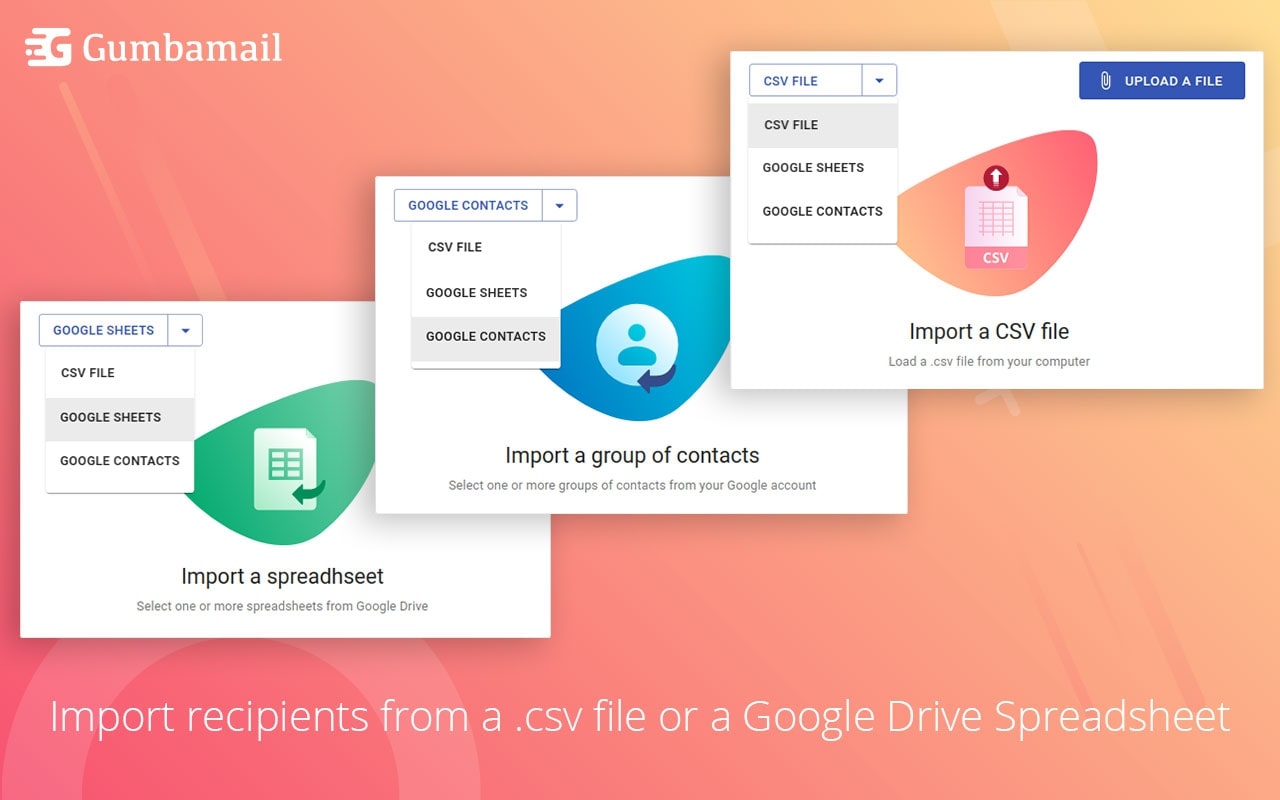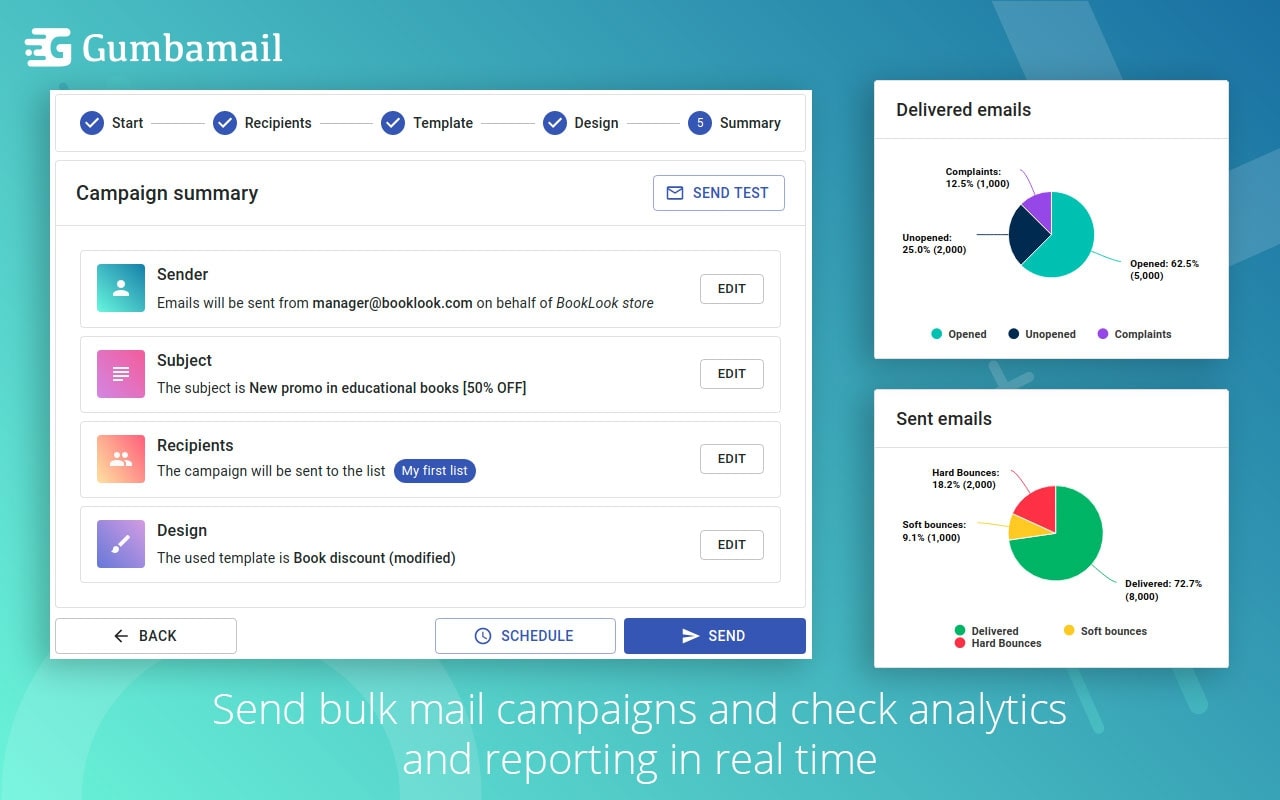6 B2B Email Marketing Tactics to Land Your Next Client
At one point, business-to-business selling consisted of cold calling, client dinners, and many evenings spent writing proposals. However, B2B selling is going digital. In 2022, 80% of B2B companies follow a hybrid sales strategy, with both in-person and online components.
The best way to implement a hybrid selling strategy is to leverage digital marketing to get qualified leads to your sales team. That way, top sales reps only spend time speaking to decision makers who are primed, informed, and ready to make a purchase decision. One of the best ways to do this is to leverage email marketing.
B2B email marketing is one of the most efficient marketing channels in existence. However, finding new customers through B2B marketing requires a completely different strategy than B2C email marketing. Below, we offer six best practices to put into place to land your next customer.
6 B2B Email Marketing Best Practices for Beginners

Want to capture more B2B buyers? Email marketing can help you get more qualified leads into your pipeline, thereby getting you one step closer to your sales goal. As you launch your email marketing strategy, keep these best practices in mind.
1. Implement an Effective Lead Nurturing Strategy
When it comes to B2B marketing, remember this: It’s a long game.
Unlike B2C marketing, where a special promo or flash sale could be enough to entice consumers, the B2B sales process can last for months (or years!) on end. Depending on your industry, the typical B2B sales cycle lasts from 90 days to a full year, with some fields — like manufacturing — sometimes requiring five years or more to land a sale.
Therefore, you’ll need to exercise extraordinary patience as you map out your email marketing strategy. Rather than send potential customers a standalone blast with the subject line reading, “Buy now!” you’ll need to create a nurture workflow of educational content. Position yourself as a trusted thought leader in your field, providing links to recent industry news, internal content (like white papers or webinars), or case studies from clients. That way, you’ll stay top-of-mind when the customer is ready to buy.
2. Remember That Cadence is Key
As you draft your email automation workflow, you need to keep timing in mind.
Consider this scenario: You decide to opt-in to an email list, receive an automated email confirming your subscription, then receive 2-3 additional welcome emails over the next two days. What would you do next? Chances are, you’ll unsubscribe from the list in four days or less, because it’s too overwhelming and intrusive.
Today, people are inundated with marketing messages. Reports state the average person faces 6,000-10,000 advertisements every single day. In addition, the average employee receives 121 business emails each day in their inbox. As people are inundated with information, you need to remain respectful of their time, energy, and inbox. (Translation: If you think you’re emailing your list too often, you probably are.)
As you refine the timing of your email content, revert back to your sales process. If your sales process is 90 days and you want to send six educational emails during that time, you only need to email your list bi-weekly. If your sales cycle is a year or more, a monthly or quarterly email newsletter may be sufficient.
3. Create a Target Buyer Persona
Before you write a targeted message to your audience, you first need to understand who you’re speaking to.
Paint a clear picture of your target audience by drawing up a buyer persona. A buyer persona will be a depiction of your ideal customer’s demographic data, interests, pain points, and other relevant information. By thinking of a real person, it will help you write content to connect with that individual.
Remember: Chances are, you’ll have more than one target buyer in your audience. Therefore, create several marketing personas and write targeted email messages to those individuals (discussed more below).
4. Always Segment Your Audience

It’s unrealistic to expect every single person in your email list to express the same interests, ask the same questions, and want to purchase the same products from your business. Therefore, you need to implement segmentation.
Segmentation uses data points to divide your audience into different groups. You can divvy up your list up based on virtually any metric — whether it’s past buyer history, current stage in the sales cycle, geographic location, or which products they’re interested in. To do this, you’ll need to leverage an email marketing platform that comes with a built-in CRM system where you can create custom fields.
Once you create different segments, you’ll send targeted emails to each group. For example, you might send a targeted message discussing your new features to former customers, but this email wouldn’t be appropriate for leads who have zero experience with your product. Or, if you’re sending your top sales rep on a trip to Chicago, you might send a targeted message to all potential leads in that geographic area, with the CTA (call to action) going to a Calendly link to book a meeting.
5. Add a Personal Touch
One of the biggest advantages of email marketing is being able to send mass messages while personalizing them to the end reader. In fact, 93% of companies who start sending personalized emails see an uptick in conversion rates.
Adding a personalized touch to emails doesn’t take much effort, but makes a big impact. Start by addressing each reader by their first name in your salutation, or referencing their recent purchase in the body copy of your message. To do this, you’ll need to use an email service provider that offers personalization functionality, such as merge fields.
6. Never Stop Testing

As with all things business, what works for one company may not work for others. Therefore, you’ll need to continuously tweak your B2B email marketing strategy to find what works best for your unique business.
To start, consider A/B testing email subject lines to find which message leads to a surge in open rates. You can switch up the dates and times on which you schedule your emails, to see if you can increase your deliverability rates. Experiment with different email templates to see if you see an increase in conversion rates. Finally, be sure to visit automated emails (like welcome emails) once every six months to make sure they are still aligned with your current products and services.
To ensure these experiments are paying off, use a digital marketing platform that comes with built-in reporting metrics. That way, you can apply cold, hard facts to your tests. You can then continuously refine your content marketing strategy going forward.
Leverage B2B Marketing Tools That Work for You, Not Against You

B2B email marketing helps you get qualified leads to sales, which can cause a boost in business for your company. However, if you’re just launching your email marketing efforts, you’ll need the right tools to get off the ground.
To send B2B email marketing campaigns, you’ll need a marketing provider that comes with built-in scheduling features, advanced reporting, customized merge fields or tags, and a pre-designed template library. To get all of the above (and more), use Gumbamail.
B2B companies trust Gumbamail for email marketing because it’s user-friendly, comes with 800+ pre-designed templates, offers a drag-and-drop email builder, and includes an advanced reporting dashboard. Plus, Gumbamail works with your existing Gmail account, which helps you save time each day.
Ready to see how Gumbamail can boost your lead generation efforts? Download the plugin to get started.


